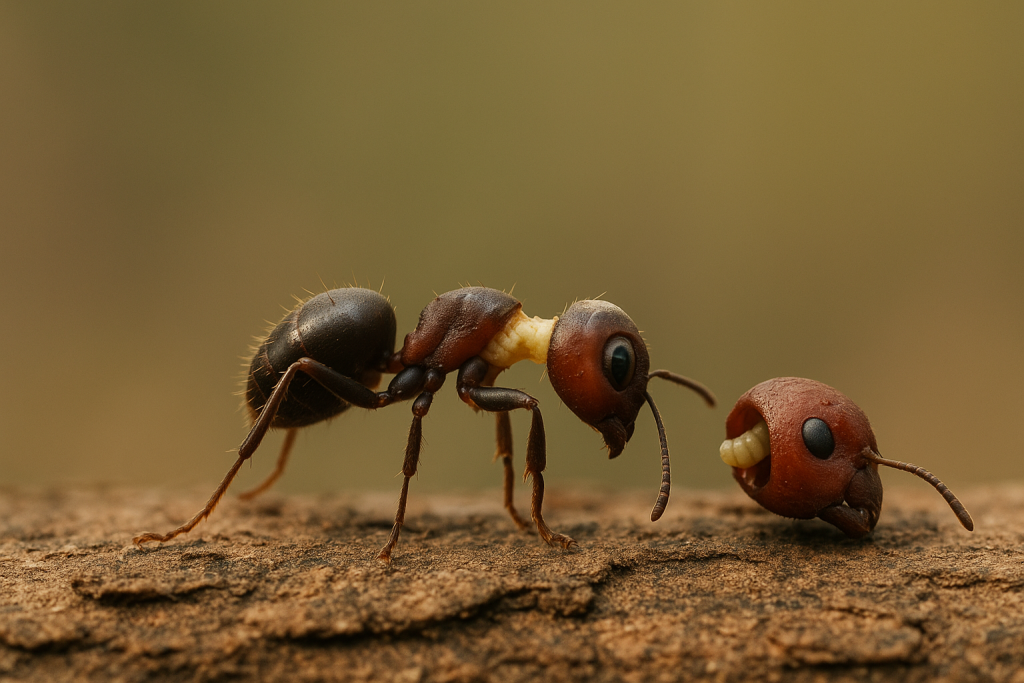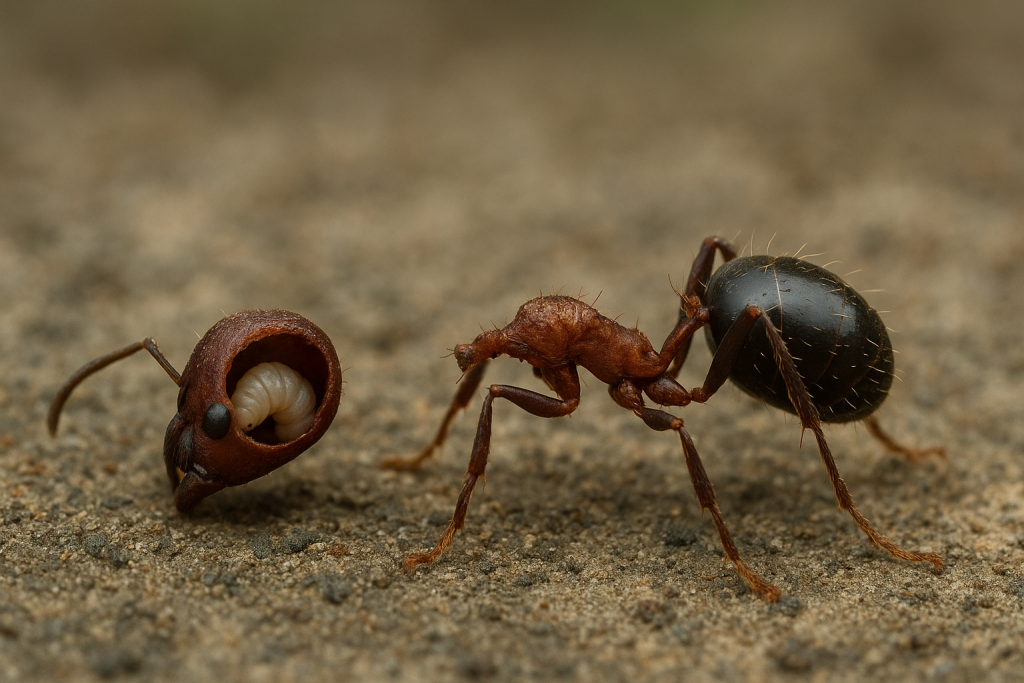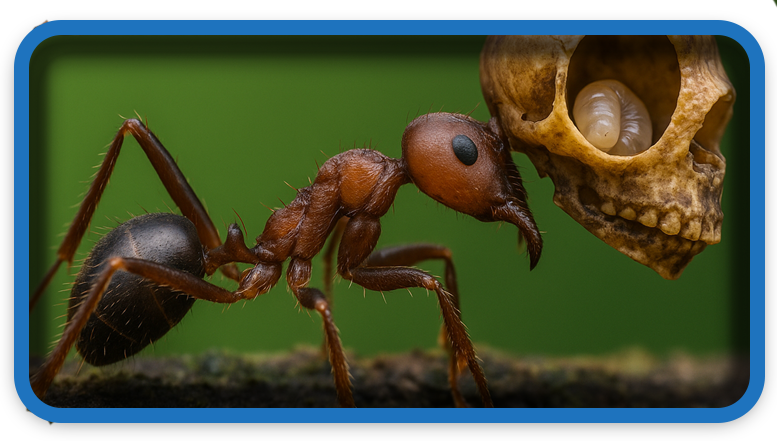⏲️ Estimated reading time: 3 min
🧠 Title: Horrifying Parasite: The Phorid Fly That Decapitates Ants
A chilling real-life horror: the phorid fly larva turns an ant into a walking corpse, then decapitates it from within. Discover how this gruesome biological attack unfolds in nature’s most macabre survival tactic.
The Gruesome Fate of an Ant Infected by a Phorid Fly
Nature is full of shocking survival tactics, but few are as disturbing as the behavior of the phorid fly larva. In one of the most horrifying examples of parasitism, this fly doesn’t just infect an ant it takes complete control of it, ultimately decapitating its host from the inside.
A Silent Invasion Begins
The process starts deceptively simple. A female phorid fly locates an unsuspecting ant and deposits a single egg into its body. The ant may continue about its normal activities, unaware of the invader growing inside it.

Feeding from Within
Once hatched, the larva begins its journey. It moves through the ant’s body, feeding on non-vital tissues to avoid killing its host too soon. This sinister precision allows the ant to function normally, acting as a perfect mobile incubator.
The Climb Toward Destruction
As the larva matures, it makes its way toward the ant’s neck. Here is where the true horror begins. The larva gnaws through the muscles of the neck, severing the connection between the ant’s head and body. The ant’s body stops functioning its purpose fulfilled.
Life Inside the Skull
With the head detached, the larva now claims the skull as its home. This morbid sanctuary becomes a pupal chamber. Sheltered within the hollow remains of what it destroyed, the larva transforms safely into a full-grown phorid fly.
Why This Parasite Is So Efficient
This strategy is not just horrifying it’s effective. By keeping the ant alive as long as possible, the larva avoids predators and benefits from the ant’s continued movement. The decapitated head offers a strong protective casing during the vulnerable pupal stage, increasing survival rates.

Implications for Nature and Science
The phorid fly’s terrifying life cycle has fascinated entomologists for years. While grotesque, this form of parasitism is also an incredible example of evolutionary adaptation. Researchers study it for insights into:
- Behavioral manipulation in insects
- Neurological control by parasites
- Evolution of parasitic survival strategies
Some species of phorid flies are even being used in biological control programs to reduce fire ant populations in North America.
Nature’s Dark Genius
The story of the phorid fly is more than just a creepy tale it’s a stark reminder that nature doesn’t play by human rules of morality. What may seem horrific to us is simply biology working in its most cunning and unforgiving form.
🔔 For more tutorials like this, consider subscribing to our blog.
📩 Do you have questions or suggestions? Leave a comment or contact us!
🏷️ Tags: phorid fly, ant parasites, parasitic insects, insect behavior, biological control, nature horror, science facts, creepy insects, insect life cycle, entomology
📢 Hashtags: #PhoridFly #InsectParasite #NatureIsMetal #ParasiticInsects #CreepyFacts #AntDecapitation #RealLifeHorror #EntomologyFacts #BiologicalControl #InsectScience
🔬 Final Thoughts
The lifecycle of the phorid fly larva is as fascinating as it is chilling. It showcases nature’s brutal efficiency and the bizarre strategies life has evolved to survive. While terrifying to imagine, it serves as a powerful testament to the complexity and savagery of the natural world.
Only logged-in users can submit reports.
Discover more from HelpZone
Subscribe to get the latest posts sent to your email.

